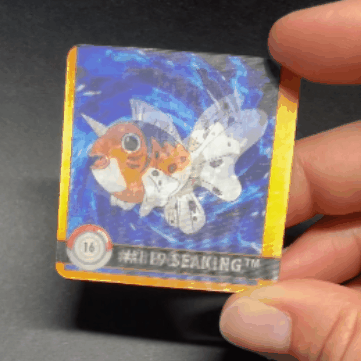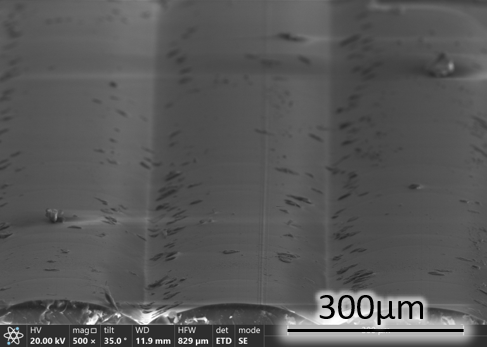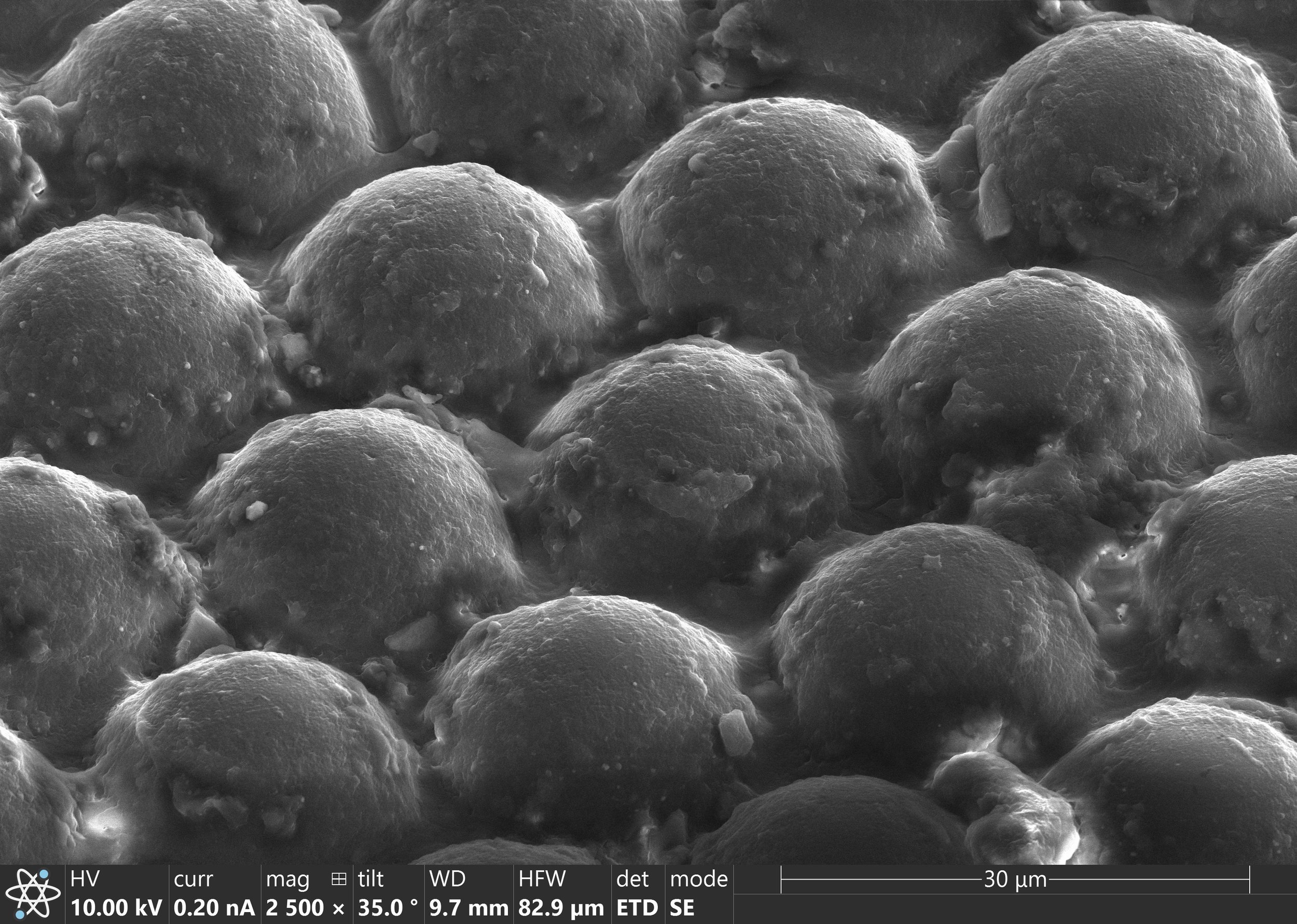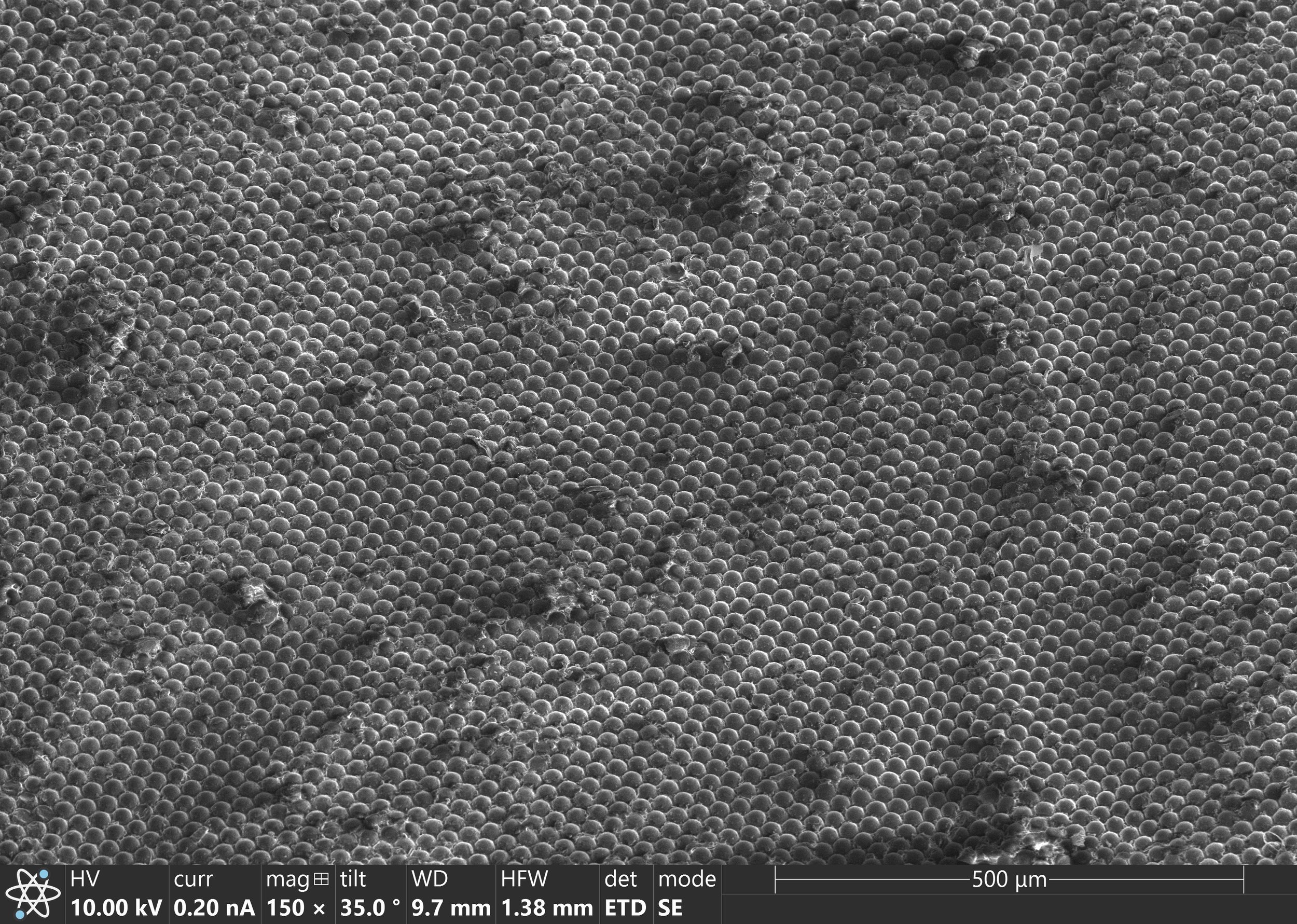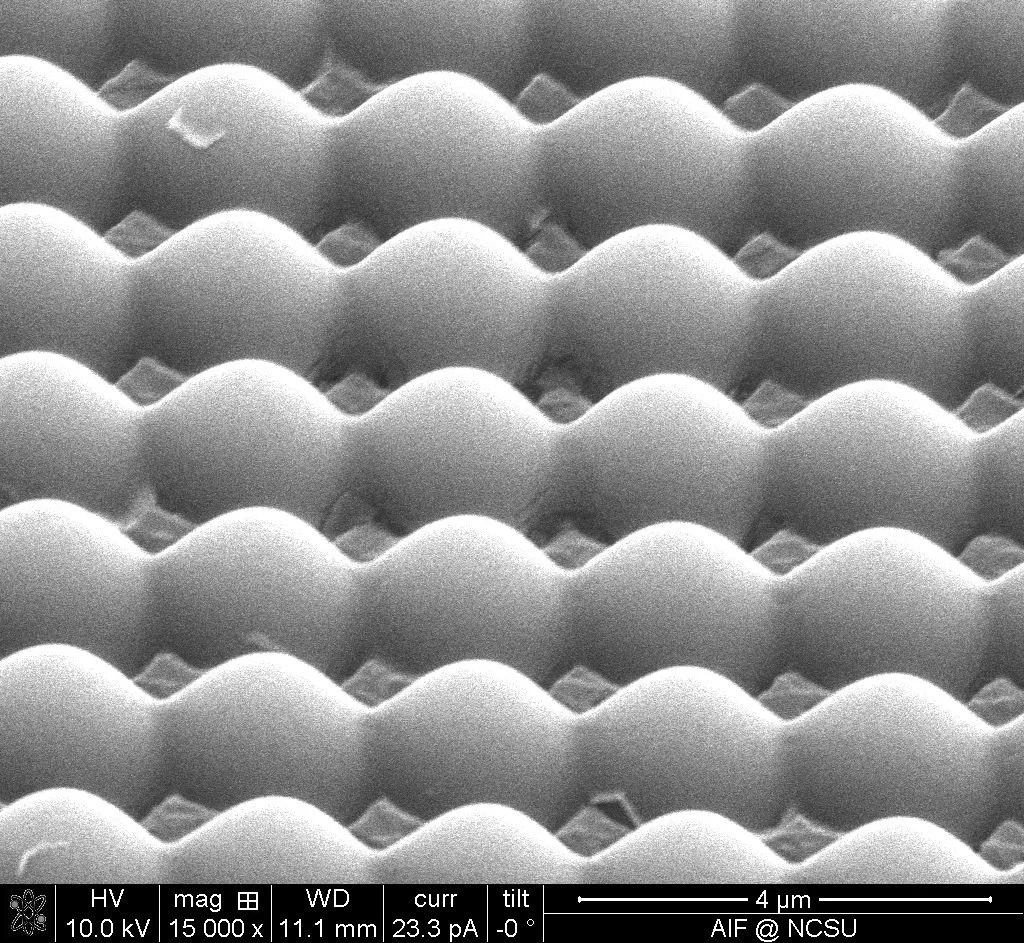Figure 1: Lenticular Pokémon card.
As someone who grew up in the early aughts, Pokémon was an essential part of my childhood. But I will confess I cared less about which cards could help me beat my brother and placed more value on which cards looked the coolest, so it should come as no surprise that the metallic cards and hologram collectibles were my favorites. The holograms, primarily stickers and coins, showed shifting images as you tilted them and were my first introduction to lenticular arrays (Figure 1).
These holograms make use of lenticular lenses and composite images (Figures 2 & 3) to create simple optical illusions like transformations, animations, and forced perspective.
Figure 2: Optical microscope images of a lenticular lens array (right) and the printed background (left). Taken from a lenticular Pokémon card.
Figure 3: SEM image of the microlens array on a lenticular Pokémon card.
Lenticular Lenses
In its simplest form, a lenticular print consists of an array of cylindrical lenses placed on top of a composite image. The lenses and image are aligned to create the shifting effect. When viewed from one angle, the lenses direct one portion of the composite image to the viewer. As the viewing angle shifts, a different region of the background image is projected to the viewer from the lens, creating the illusion of transformation or motion as the observer shifts their perspective (Figure 4).
Figure 4. As the angle of the lens relative to the viewer shifts, the portion of the background projected to the viewer also shifts.
Evolution
As the resolution limit of nanoprinting and nanoimprinting has improved, the complexity of optical effects that can be achieved has too. Patents for lenticular lenses date back to the late 1800’s and early 1900’s, when inventors were attempting to create a way to look at stereoscopic images without the need for glasses, but it didn’t become popular until the 1950’s and 1960’s when the introduction of injection molding and roll-to-roll processing made it possible to mass produce lenticular images. It was primarily used for novelty items and advertisements, including ‘I like Ike’ campaign buttons in the 1952 election (Figure 5).
As printing and imprinting abilities improved, more images could be stitched together to simulate more realistic motion, as demonstrated by photicular books. The technology also advanced to incorporate spherical lenses - or fly’s eye arrays - which operate like cylindrical lenses but work in two directions and therefore generate more realistic depth and movement effects. By creating more complex images, with processes that are harder to duplicate without specialized technology, these once novel illusions can have a powerful impact on security and other advanced applications.
Anti-counterfeit
What began as a novel 2D effect in post cards and children’s toys as evolved beyond the 1D lenticular lens into a 2D micro lens array creating interactive security features strong enough to protect the most valuable denomination of US currency.
Microlens arrays are powerful anti-counterfeiting measures because they are difficult to reproduce and can quickly reveal if a good is genuine without the need for additional technology. If the lens array and the background image are designed to easily delaminate, micro-optic security features can also reveal if goods have been tampered with, since the micro-optic effect requires careful alignment of lens array and background image.
Counterfeit goods can pose serious risks to consumers, especially in industries like pharmaceuticals where fake medications can have harmful effects. Counterfeiting also has serious implications for currency, since mass amounts of counterfeit money has the potential to generate inflation and damage economic stability and ultimately weaken the public’s trust in their currency. The US $100 bill has a microlens stripe on it which features ortho-parallactic motion - meaning that the animation motion moves perpendicular to the motion of the bill. This is achieved with a fly’s eye array that allows for bi-directional effects (Figure 6).
Figure 6: SEM images of the microlens stripe on a $100 bill.
Packaging and XR
Other application areas have also benefited from the advanced manufacturing ability, for example packaging and advertisements have come a long way from the simple, dual-image prints utilized in the 1950’s. Companies like Fathom Optics can create packaging with advanced motion and depth effects to grab customers’ attention and enhance brand recognition. The advanced printing techniques can also be utilized to create tamper evident devices that reveal when packaging has been opened, similar to those employed in the anti-counterfeit space.
Microlens arrays have also been used in the display space, for outdated products like 3D displays as well as up-and-coming technologies like AR and VR headsets. While they are no longer in use, 3D TVs were once seen as the future of television and made use of lenticular lenses to create the perception of depth without the need for the viewer to be wearing glasses. AR and VR goggles may make use of fly’s eye 3D arrays on top of microdisplays in an effort to make goggles more efficient and compact to improve the wearability and usability of the devices.
SMS and Microlens Arrays
SMS, with our patented nanocoining process, currently specializes in microlenses that are even smaller than those needed for the applications above - less than 10 micrometers in pitch (Figure 7). In doing so, we hope to help power the next generation of microlens applications!
Figure 7: SEM images of an indented mold (left) and its replica (right).
Acknowledgements:
Thank you to Caleb Meredith and Ben Bleiman for lending your expertise.
The SEM images were taken at the North Carolina State University Analytical Instrumentation Facility.

